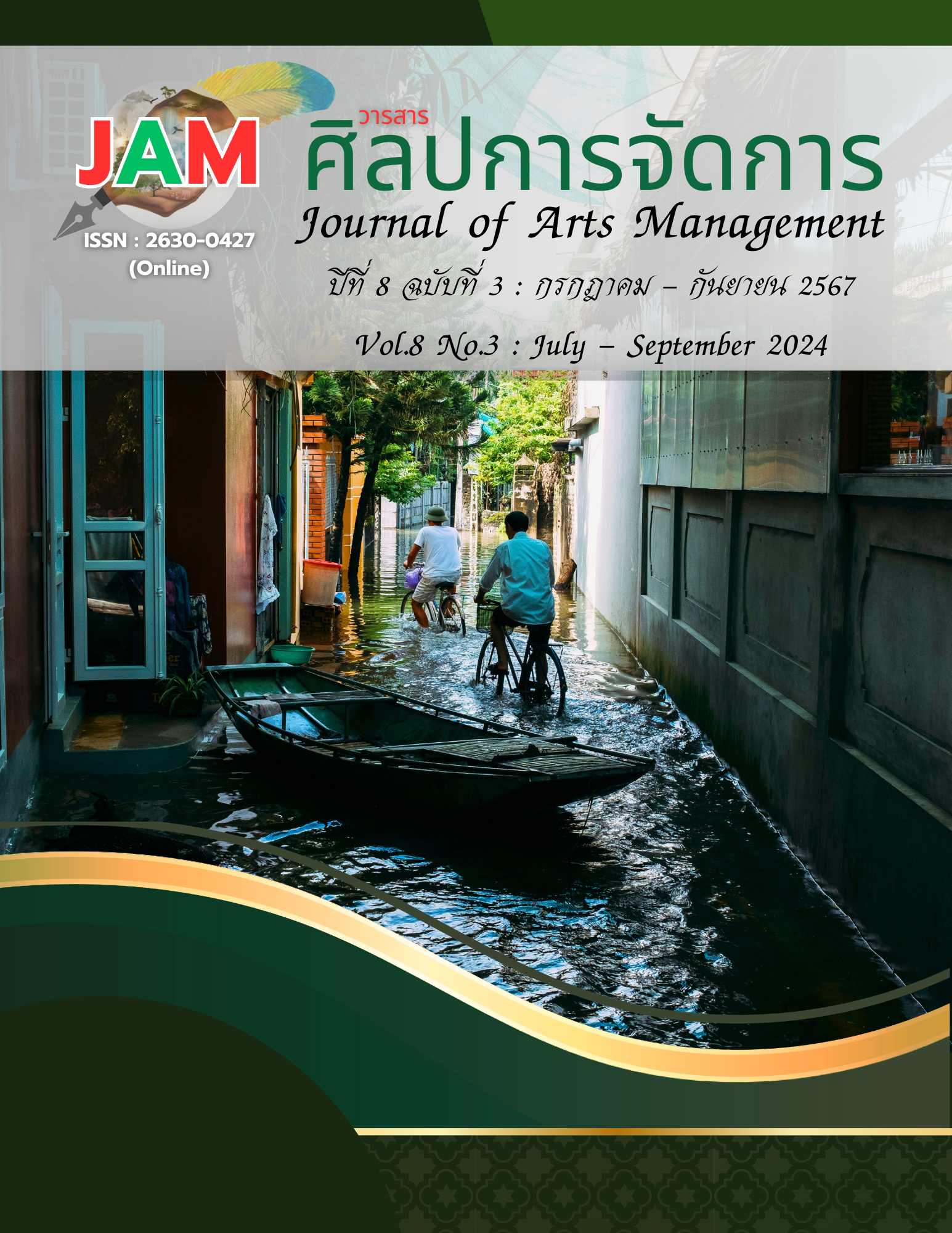Exploring the Causes of Burnout Syndrome among University Instructors in Thailand
Main Article Content
Abstract
This study delves into the factors associated with burnout among Thai university teachers, focusing on demographic, academic, and work-related factors. Out of 373 participants, most are men aged 41-50 with doctorate degrees. The highest levels of burnout are depersonalization (25.47%), emotional exhaustion (20.91%), and reduced personal achievement (15.82%). Eighty-seven respondents are experiencing burnout. Females are 34% more likely to experience it, while those aged 51-60 have a 34% chance. Single individuals have a 31% higher likelihood of experiencing burnout, while those with a doctoral degree are 32% more likely. Academic positions, such as assistant professor (56% higher) and assistant dean (67% higher), also increase the likelihood of burnout. Work factors, such as starting careers (0-10 years), having over 21 years of experience (34% and 33%, respectively), and working overtime for 11-20 hours per week (58% higher), also contribute to burnout. These findings are not just informative but crucial for understanding the prevalence and causes of burnout among Thai university instructors. They can guide the development of effective human resource management policies in higher education institutions, addressing burnout and improving staff well-being and efficiency.
Article Details

This work is licensed under a Creative Commons Attribution-NonCommercial-NoDerivatives 4.0 International License.
Views and opinions appearing in articles in the Journal of Arts of Management It is the responsibility of the author of the article. and does not constitute the view and responsibility of the editorial team I agree that the article is copyright of the Arts and Management Journal.
References
Ahola, K., Honkonen, T., Virtanen, M., Aromaa, A., & Lönnqvist, J. (2006). Burnout about age in the adult working population. Journal of Occupational Health, 48(5), 363-365.
Ahola, K., & Hakanen, J. (2007). Job strain, burnout, and depressive symptoms: A prospective study among dentists. Journal of Affective Disorders, 104(1-3), 103-110.
Bakker, A. B., & Demerouti, E. (2007). The job demands-resources model: State of the art. Journal of Managerial Psychology, 22(3), 309-328.
Barkhuizen, N., Rothmann, S., & Tytherleigh, M. Y. (2014). Burnout and work engagement of academics in higher education institutions: Effects of dispositional optimism. Stress and Health, 30(4), 322-332.
Benschop, Y., & Brouns, M. (2003). Crumbling ivory towers: Academic organizing and its effects. Gender, Work & Organization, 10(2), 194-212.
Burke, R. J., & Greenglass, E. R. (2001). Hospital restructuring, work-family conflict and psychological burnout among nursing staff. Psychology & Health, 16(5), 583-594.
Cochran, W. G. (1953). Sampling techniques (Vol. 3). John Wiley & Sons.
Demerouti, E., Bakker, A. B., Nachreiner, F., & Schaufeli, W. B. (2001). The job demands-resources model of burnout. Journal of Applied Psychology, 86(3), 499-512.
Demerouti, E., Bakker, A. B., & Leiter, M. P. (2014). Burnout and job performance: The moderating role of selection, optimization, and compensation strategies. Journal of Occupational Health Psychology, 19(1), 96-107.
Fisher, R. A. (1922). On the interpretation of χ² from contingency tables, and the calculation of P. Journal of the Royal Statistical Society, 85(1), 87-94.
Gillespie, N. A., Walsh, M., Winefield, A. H., Dua, J., & Stough, C. (2001). Occupational stress universities: Staff perceptions of the causes, consequences and moderators of stress. Work & Stress, 15(1), 53-72.
Golembiewski, R. T., Boudreau, R. A., Munzenrider, R. F., & Luo, H. (1986). Global burnout: A worldwide pandemic explored by the phase model. Greenwood Press.
Grissom, J. A., Nicholson-Crotty, J., & Keiser, L. (2012). Does my boss’s gender matter? Explaining job satisfaction and employee turnover in the public sector. Journal of Public Administration Research and Theory, 22(4), 649-673.
Kroon, B., van de Voorde, K., & van Veldhoven, M. (2009). Cross-level effects of high-performance work practices on burnout: Two counteracting mediating mechanisms were compared. Personnel Review, 38(5), 509-525.
Leiter, M. P., & Durup, J. (1996). Work, home, and in-between: A longitudinal study of spillover. Journal of Applied Behavioral Science, 32(1), 29-47.
Maslach, C., & Jackson, S. E. (1981). The measurement of experienced burnout. Journal of Occupational Behaviour, 2(2), 99-113.
Maslach, C., & Leiter, M. P. (2016). Understanding the burnout experience: Recent research and its implications for psychiatry. World Psychiatry, 15(2), 103-111.
Maslach, C., Schaufeli, W. B., & Leiter, M. P. (2001). Job burnout. Annual Review of Psychology, 52(1), 397-422.
Montero-Marín, J. (2016). El síndrome de burnout y sus diferentes manifestaciones clínicas: Una propuesta para la intervención [The burnout syndrome and its various clinical manifestations: A proposal for intervention]. Anest. Analg. Reanim, 29(1), 1–16.
Purvanova, R. K., & Muros, J. P. (2010). Gender differences in burnout: A meta-analysis. Journal of Vocational Behavior, 77(2), 168-185.
Ross, C. E., Mirowsky, J., & Goldsteen, K. (1990). The impact of the family on health: The decade in review. Journal of Marriage and the Family, 52(4), 1059-1078.
Schaufeli, W. B., & Enzmann, D. (1998). The burnout companion to study and practice: A critical analysis. CRC press.
Shirom, A. (2003). Job-related burnout: A review. In J. C. Quick & L. E. Tetrick (Eds.), Handbook of occupational health psychology (pp. 245-264). American Psychological Association.
Skaalvik, E. M., & Skaalvik, S. (2017). Motivated for teaching? Associations with school goal structure, teacher self-efficacy, job satisfaction and emotional exhaustion. Teaching and Teacher Education, 67(2), 152-160.
Taris, T. W., Van Horn, J. E., Schaufeli, W. B., & Schreurs, P. J. G. (2004). Inequity, burnout, and psychological withdrawal among teachers: A dynamic exchange model. Anxiety, Stress, and Coping, 17(1), 103-122.
Winefield, A., Gillespie, N., Stough, C., Dua, J., Hapuarachchi, J., & Boyd, C. (2003). Occupational stress in Australian university staff: Results from a national survey. International Journal of Stress Management, 10. https://doi.org/1072-5245.10.1.51


